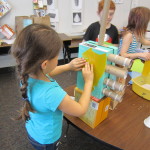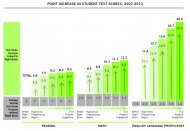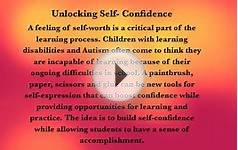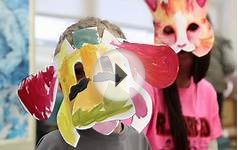 Arts instruction has long been used as a tool for reaching English Language Learners. In fact, the origins of the children’s theatre genre lie in the Settlement Houses of Chicago in the early Twentieth Century, where Jane Addams utilized theatre and poetry to help students learn English (this tradition can be seen today in the plethora of children’s books adapted for the stage.)
Arts instruction has long been used as a tool for reaching English Language Learners. In fact, the origins of the children’s theatre genre lie in the Settlement Houses of Chicago in the early Twentieth Century, where Jane Addams utilized theatre and poetry to help students learn English (this tradition can be seen today in the plethora of children’s books adapted for the stage.)
There is a wealth of information available today about the usefulness of the arts for reaching multiple learning styles but there are few studies that directly link arts integration with student test scores (particularly long-term, richly collaborative integration models).
It is fitting that the week before National Arts in Education Week (September 15 – 19), The Right Brain Initiative is releasing new data that demonstrates the impact of rich classroom arts-integrated instruction on student test scores.
Right Brain is a K-8 arts integration program in Portland, Oregon, the first effort to systemically grow arts education throughout the Portland metro area. Right Brain teacher/artist collaborations and robust professional development arm principals and classroom teachers with strategies to seamlessly blend creative thinking throughout their ongoing teaching practice. The program entered classrooms in 2009, and since that time has been committed to demonstrating how this approach to arts education can truly help students learn.
Engaged learning and creative choice making: A child creates a 3D sculpture from geometric shapes, fully integrating design and math concepts, with The Right Brain Initiative. Photo by Emily Stone. The research firm WolfBrown, with support from the Portland State University Center for Student Success, has reviewed standardized test scores for all 18, 711 unique students who attended Right Brain partner schools between the 2007-08 (the year before we entered classrooms) and 2012-13 school years (a year where 44 schools partnered with the program), with compelling results:
The research firm WolfBrown, with support from the Portland State University Center for Student Success, has reviewed standardized test scores for all 18, 711 unique students who attended Right Brain partner schools between the 2007-08 (the year before we entered classrooms) and 2012-13 school years (a year where 44 schools partnered with the program), with compelling results:
- After students began working with Right Brain, their scores more than doubled in reading and math.
- English language proficiency scores increased at least ten times as much after students participated in the program.
- In all cases, the increase in scores continued to rise over time. That is especially true for English Language Learners.
This data looks at the change in scores after students began working with Right Brain. If the average increase in student test scores before joining the Initiative was two points, we can infer that the additional growth (4.8 points for reading the first year after joining and 5.5 points the next), is related to Right Brain’s work. Of particular interest is the additional impact on English Language Learners. English language proficiency scores increased more than 10 times as much as they did before schools joined the Initiative.









